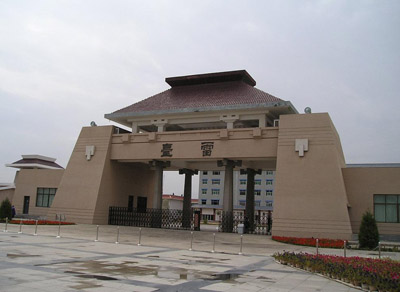| Legole.Com Discover china. Explore the beauty and wonder of the land, people, and culture of China. |
 |
|
|
 |
 Wuwei City in central Gansu once occupied a strategic position on the famous Silk Road. In 1969 a farmer discovered a tomb dating from the Han Dynasty and which has become a main tourist attraction in the city. Wuwei City in central Gansu once occupied a strategic position on the famous Silk Road. In 1969 a farmer discovered a tomb dating from the Han Dynasty and which has become a main tourist attraction in the city.
The tomb is situated in Leitai Park so called, as there was a Temple built to honor the Chinese god Leishen on the ten-meter high earth platform that was erected during the middle Ming Dynasty. The inscription on the tomb shows that it was constructed circa 186-219BC for an officer from Zhangye, another major town on the Silk Road. The tomb comprises three main chambers of brick construction placed one behind the other. Each room has a smaller annex on each of its sides. This has proved to be a very important find as the tomb contained some two hundred and thirty outstanding relics of gold, silver, copper and jade as well as pottery. The funerary artifacts included ninety-nine copper chariots complete with horses and soldiers.
The most important find was the Bronze Galloping Horse. Known in Chinese as "Ma Chao Long Que", the horse is depicted in a full gallop supported on just one foot upon the back
of a bird in flight. The statuette is roughly 35 centimeters high and 45 centimeters long, weighing 7 kilograms. The artist is unknown but the vitality and exquisite modeling of the piece has meant that it has been adopted as a symbol for Chinese tourism. The horse may be seen in the Gansu Provincial History Museum.
Admission Fee: 50
Opening Hours: 08:00 to 17:30 |
 |
|
|
 |
|
